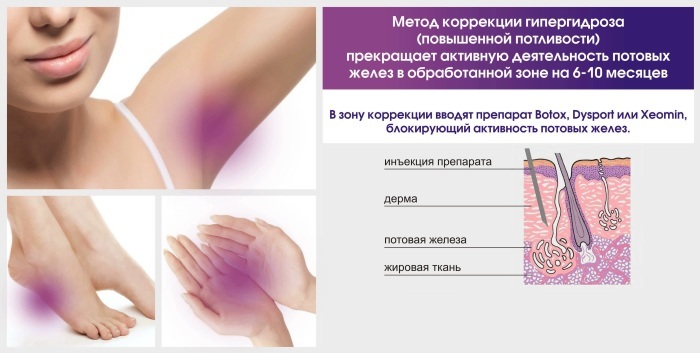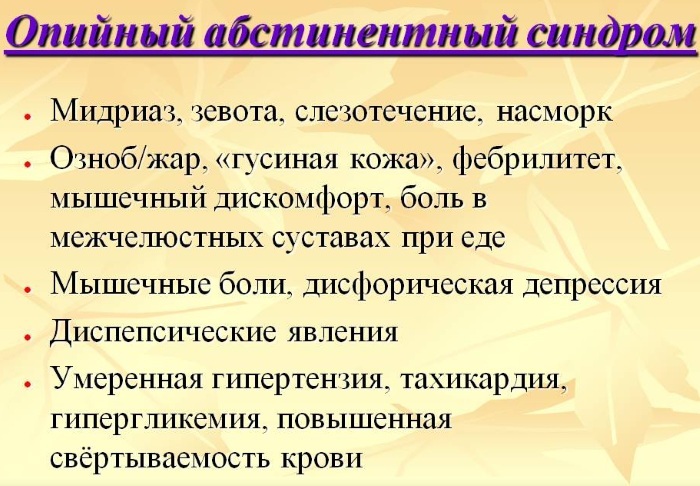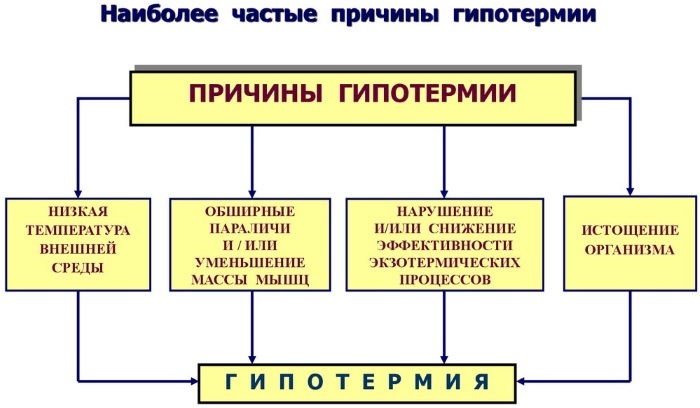Angioedema (or - angioedema) known medicine for a long time and this issue is devoted to a number of scientific studies. However, to date the mechanism of pathology is not fully understood.
The content of the article:
- 1 What is angioedema?
-
2 form of edema
- 2.1 Hereditary
- 2.2 The acquired angioedema
- 2.3 Allergic
-
3 The mechanism of development of non-allergic condition
- 3.1 After physical exertion
-
4 Symptoms and types of edema
- 4.1 swelling of the face
- 4.2 laryngeal edema
- 4.3 Swelling of the mucous membrane in the defeat of the digestive tract
- 5 Reasons for the development of children and adults
- 6 First aid at home
- 7 Angioneurotic edema treatment drugs
- 8 Traditional methods to eliminate edema
- 9 Forecast and outlook
- 10 Video of angioedema
What is angioedema?
Angioedema - it instantly develops in an acute form and extending in a short time the skin swelling, subcutaneous adipose tissue and mucous membranes. It arises as a result of sharp increase in vascular permeability and volume. It develops from several minutes to several hours.
It has a clear localization in the region of the eyelids, lips, near the genitals on the distal surfaces of the hands and feet, as well as on the mucous membranes of the respiratory and gastrointestinal tract.

In clinical practice, a complex problem due to the lack of information on the mechanism of occurrence and development, serious problems in diagnosis and treatment. According to statistics, angio edema occur in about 1 out of 50,000 people.
form of edema
Classification of angioedema gives a relatively clear picture of the mechanism of their origin, which allows further generate accurate diagnosis and choose the tactics of treatment.
Hereditary
A hereditary form of angioedema (HAE) is divided into 3 categories:
- Genetically determined I-th typeIt is observed in about 85% of cases. If one parent has this form of the disease, the probability of transmission by succession a child is more than 50%. All patients with this form of C1 inhibitor deficiency is observed from 0 to 30% of normal. For this form NAO characterized severe course and severity of considerable volume of edema which affect not only the skin, but also to mucous membranes.
- NAO II-type characterized by the fact that the patient's inhibitor level is relatively normal, but there is a significant decrease in its functional activity, or its improper structural form. In this case, the clinical manifestations are less pronounced and the affected areas are usually on the limbs, at least - on the face.
- type III It identified and described recently. Mostly associated with the hereditary blood clotting factors. Compared with the first two is characterized by normal levels and functional activity of the inhibitor. Symptomatology is fully consistent with the first two types, but it depends on the level of estrogen. The disease affects only women. Main exacerbation occur during pregnancy, use of oral contraceptives and replacement therapy during menopause.

All hereditary types are not accompanied by urticaria. As a rule, the NAO is already apparent at an early age with subsequent systemic relapse.
The acquired angioedema
Acquired angio edema (PAO) is much rarer. It appears mostly after the age of 40 on the background of malignant tumors, autoimmune and infectious diseases. In the case of the PSC needs an accurate diagnosis for a successful therapy.
Allergic
Another mechanism of formation underlies the allergic form of JSC. Most often it is caused by hypersensitivity reactions. The result is expansion of the skin vessels and increased vascular permeability. The migration of various cells formed swelling in the deep layers of the skin and subcutaneous fat.
Allergic form stable due to binding to one or more allergens:
- medications;
- products;
- poisons;
- insect bites;

- chemicals.
The mechanism of development of non-allergic condition
Angioedema - it is also a disease of non-allergic nature, are associated with disorders of the immune system, in particular the complement system, is responsible for resistance to the introduction of foreign agents involved in causing inflammation and allergic reactions.
Through activation of this system is an increase in vascular lumens, increasing their permeability that promotes penetration of the liquid in the interstitial space and, respectively, edema formation. Regulation of activity of the complement system occurs due to changes in levels of specific enzyme - inhibitor C1.
When it is inhibited by excess activity of the system, and with a lack of - is activated. Clinical investigations have established that inadequate C1 underlies angio edema nonallergic etiology.
The reason for this form of joint-stock company - raising the level of histamine in the body associated with the use of a number of foods. Separately, describes a form of vibration that occurs under the influence of vibrations.
After physical exertion
Angioneurotic edema in rare cases can develop after considerable physical exertion. The reason for this phenomenon - Excessive physical activity, which is the factor that provokes the underlying disease in non-allergenic form.
Symptoms and types of edema
Clinical manifestations angio edema well known. Primarily manifested swelling of the skin, subcutaneous fat and mucous membranes. In some cases the swelling is accompanied by urticaria. For NAO characteristic dense and painless swelling different localization (may be formed on any part of the body or the submucosa).

Swelling of pale color, palpation leaves no holes, no itching. cases of accumulation of pleural fluid sometimes occur, cerebrovascular accidents (cerebral edema), difficulty urinating (swelling of the urinary organs), swelling of the major muscles and joints.
Swelling may occur for no apparent reason, but more provoking factors are:
- trauma;
- menstruation;
- infection;
- stress;
- medications;
- surgical or dental procedures (almost half of the cases).
Most often, when swelling has a constant NAO localization. Development Dynamics sufficiently slow (from 12 hours to two days), there is no effect from the use of antihistamines. edema periodicity is not stable.
Symptomatology PAO fully corresponds to the picture described above, but has differences:
- It begins at an older age (after 40 years).
- The lack of genetic heritage.
- The presence of associated symptoms of autoimmune diseases.
In the presence of the NAO and PAO, the disease manifestations of urticaria is not accompanied. Angioedema - this in addition to hereditary forms of the disease also the allergic type. For allergic angio edema characteristic manifestation urticaria, pruritus and other symptoms of atopic disorders. Swelling hot to the touch, covers bloodshot.
There is pain, while squeezing the nerve endings there is a phenomenon of paresthesia. Accompanied by a drop in blood pressure, anaphylactic reactions, bleeding from the vagina. Often there is bronchospasm. This form is characterized by rapid development and stable cupping antihistamines. Without treatment, passes for 2 - 3 days.

To distinguish shapes angio edema should be aware of the following:
| symptoms | hereditary form | allergic etiology |
| initially identified | In childhood | In young years |
| Genetics | There is at least one of the blood relatives | The family has a person suffering from allergies |
| factors of influence | Trauma, pressure, stress, infections, drugs, surgical procedures, stress, infection. | Direct contact with the carrier allergen |
| Development dynamics | The slow development (12 - 36 hr.), The transition to the remission stage for 2 - 5 days | The rapid development dynamics and extinction. |
| Localization | stable localization | instability localization |
| The presence of hives | Absent | Presence in the majority of cases |
| laryngeal edema | There is often | not typical |
| pain | In most cases | As a rule, there are no |
| The presence of aggravated allergic history | Absent | present |
| Receiving antihistamines | not effective | Expressed positive |
swelling of the face
Facial swelling occur in all forms of AD. Localization is most commonly seen in the area of the eyes, eyelids, around the lips. At high activity edema arises temporary blurred vision due to compression of the eyelids. A particular danger is the swelling in the lips. It can spread to the submucosa of the oral cavity, pharynx and larynx (this localization - the most dangerous).
laryngeal edema
When localization submucosa upper airway edema capture zone above the larynx, pharynx, tongue, and lips. Accompanied by a hoarse voice, passing in a whisper, wheezing.

In the most severe forms of laryngeal edema without timely medical care cause suffocation and death.
Swelling of the mucous membrane in the defeat of the digestive tract
Lesions of the gastrointestinal tract, usually occur in hereditary forms of AD. More often than not have the character of systematic recurrence with sharp pains. They may be accompanied by anorexia, diarrhea and vomiting.
Clinical manifestations of the same type with symptoms of "acute abdomen" and intestinal obstruction. As a rule, the external manifestations on the skin does not happen. When endoscopic well-defined segmental swelling of the submucosa.
Reasons for the development of children and adults
Angioedema - a pathology that occurs under the influence of many factors. The causes of angioedema correspond to their classification. Thus, for forms of hereditary primary cause is a genetic factor or transfer of disease inherited from one (or both) parents. PAT causes to a greater extent are autoimmune and oncological diseases.
For the development of edema as allergic and non-allergic genesis of the reasons are very similar:
- contact with pollen;
- the impact of poisons insects;
- working with chemicals and their effects;
- the presence of different kinds of food preservatives;
- medicines.
A separate group of factors should influence the use of large quantities:
- fish;
- chocolate;

- smoked;
- cheese;
- beer;
- wine;
- tomatoes;
- spinach;
- other types of alcohol;
- number of drugs (antibiotics, muscle relaxants, general anesthetics, narcotic analgesics);
- iodinated contrast media used in radiology;
- ACE inhibitors.
Provocative factors are:
- physical and emotional overload;
- prolonged action of thermal factor;
- contact with water;
- contact with infectious agents (viruses, bacteria, fungal and parasitic infections).
In addition, the AO may be associated with abnormalities:
- gastrointestinal tract;
- Respiratory;
- of cardio-vascular system;
- nervous system;
- genitourinary system.
First aid at home
At the first suspicion of angio edema should immediately call an ambulance. The dynamics of reactions can be very short-lived and dangerous via delay.
Before the arrival of the brigade:
- Plant a patient in a comfortable position, take all measures to avoid panic.
- When an unknown diagnosis give it antihistamines should not be. They can be applied in case the pathology is accompanied by urticaria. It's a little facilitate the patient's condition.
- It is recommended to drink plenty of liquids, better - mineral water without gas. If one is not available, it can be added to a liter of water a quarter teaspoon of baking soda.

- Ensure good access of air and ventilate the area.
- On the edema region impose a cold pack or ice water bottle (or plastic bottle).
In severe cases, it is better not to take any measures that are due to lack of skills and qualifications can only worsen the patient's condition.
Angioneurotic edema treatment drugs
For each form of angioedema specific drugs are used.
Their selection provides the physician with a preliminary advice of experts (if necessary):
- endocrinologist;
- allergist;
- surgeon;
- otolaryngologist;
- cardiologist;
- gastroenterology;
- parasitologist;
- oncologist;
- rheumatologist.
Tactics therapy for angioedema provides:
- mild acute conditions;
- prophylaxis in the current period of remission;
- Long-term preventive measures.
Therapy hereditary edema involves both non-drug measure, and the use of drugs. The first include the provision of respiratory function through a tracheostomy or intubation.
Medications with the NAO and PAO are about the same (dosage and choices made by the attending physician):
- C1 inhibitor;
- firazir;
- fresh or fresh frozen plasma;
- Antifibrinolytics;
- danazol and analogs or methyltestosterone.

Antihistamines are not effective at the NAO. Treatment AO allergic and non-allergic diseases without C1 inhibitor has its own characteristics.
Prior to the appointment of medical treatment:
- Appointed hypoallergenic diet.
- Cancels the drugs that can trigger disease, and replacing them with others, if necessary.
- Stoped identified during examination infectious and inflammatory processes of different origin.
The basis of the medical treatment is the third generation antihistamines:
- Telfast;
- Tsetrin;
- Zyrtec;
- allergodil;
- Sempreks;
- Terfenaddin;
- astemizole;
- Loratadine.
They can also be used, and the second-generation drugs:
- Rupatadin;
- ebastine;
- cetirizine;
- fexofenadine;
- loratadine;
- levocetirizine;
- Desloratadine.
These pharmaceutical forms can be applied sufficiently long period. Says the best effect when they are used in the period of remission. first generation drugs are not recommended for use without additional indications in a specific case.
The reason - the multiple side effects. Corticosteroids are recommended in cases of severe illness. With the threat of life recommended epinephrine.
Traditional methods to eliminate edema
Over the long history of the disease in traditional medicine created many recipes for relief and removal of edema. However, you should remember that is not recommended without an accurate diagnosis and recommendations of the attending physician to self-medicate any means. The result of this treatment can be severe complications and even death.
Here are the main folk techniques that can be used after the appointment of treatment as an aid:
-
Infusion of lemon balm. Tablespoon chopped herbs add 0.5 liters of boiling water. Infuse for about an hour. Drink in 3 doses before meal.

- Milk with soda. You need to drink 3 times a day for a glass of warm milk with soda, taken at the tip of a knife.
- The infusion of nettle roots.Melko chopped roots (2 tbsp. l.) sugar and 1 liter of boiling water, filtered through 2 chasa and take 30 ml 3 times per day.
- Infusion of birch leaves. Per cup of boiling water - 1 tbsp. l. dried leaves or fresh 2. Cool naturally to a suitable temperature and drink. Reception - 3 times a day before meals. The residue is used to compress the infusion after complete cooling.
These are only the most simple and accessible folk remedies. In addition there are many more complex recipes of various components.
Forecast and outlook
In the simplest cases, the treatment of angioedema quite short and not complicated. In severe cases, the process becomes more protracted and complicated. Please be aware that the hereditary forms of edema and acquired SA is stored for life. Therefore, patients should regularly undergo preventive treatment and comply with all the recommendations of the attending physician.
In this case, it maintains an acceptable quality of life and eliminate the possibility of death. Swelling of the larynx are the most dangerous of the AO. Most often, deaths connected with this type of edema. In the presence of the disease, followed by urticaria, it should be remembered that contact with cold water is provocative factor.
Under certain conditions, the patient may develop angioedema after bathing. Most of these cases end in death of the patient. In addition, it is necessary to bear in mind this is a statistical fact that if AO, followed by urticaria, recurs at intervals of six months, then the process will continue for at least 10 years.

There are cases of spontaneous termination of chronic AD, aggravated urticaria. Most often it applies to children. Angioedema - is a common abnormality with high dynamics and often fatalities. Therefore, the issue of timely and proper treatment of the disease should be treated very seriously.
Registration of the article: Lozinski Oleg
Video of angioedema
What is angioedema, symptoms and treatment:



